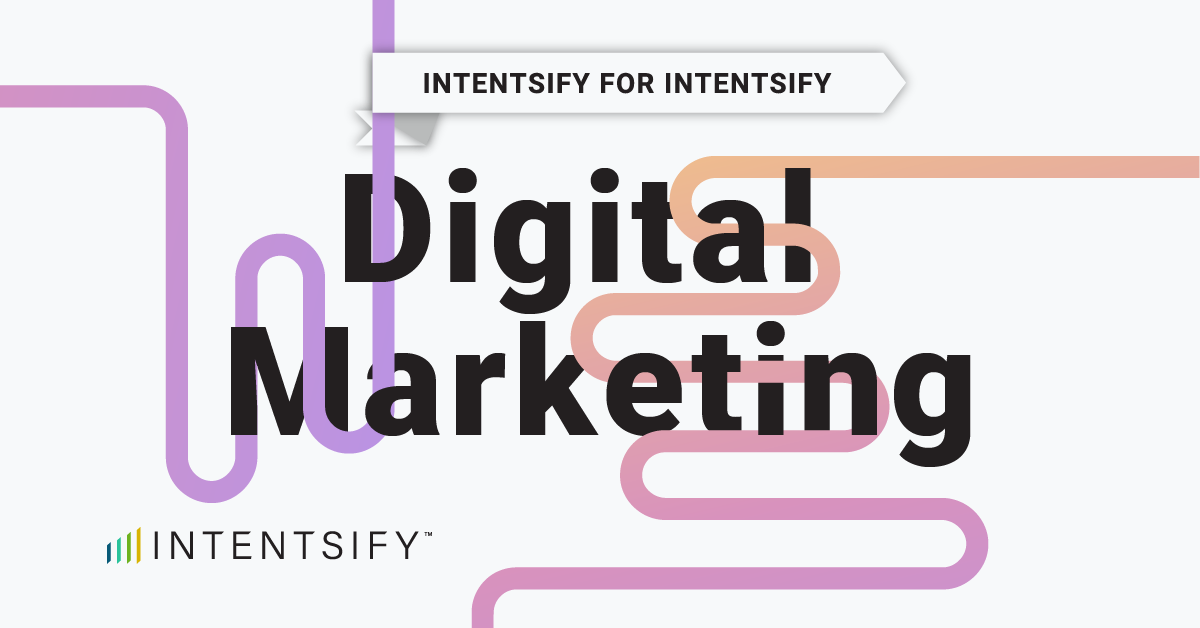A version of this article was originally published on CMSWire.
“Our team isn’t ready for intent data” or “Only enterprise companies can afford that.” These statements can often be heard circulating throughout the B2B community. I used to think so myself. Indeed, such ideas may have been true just a few years ago. However, changes in the technology landscape—as well as among B2B marketing and sales disciplines—have weakened these once common concerns, if not completely ameliorated them.
The Traditional Barrier to Intent Data Adoption? Scarce Resources
Growth-stage companies—by which I’m referring generally to startup businesses of less than 500 employees—have historically been less likely to invest in intent data for three reasons: lack of data expertise, inability to act on the insights provided and high costs. In recent years, however, each of these barriers have significantly diminished. Let’s look at how.
Data Expertise/Technical Savvy
Enterprise companies have much larger teams, which provides the luxury of specialized roles. In fact, it’s common for larger businesses to have teams devoted to gathering, organizing, deploying and measuring the impact of data. Such specialization is far rarer for growth businesses, often causing them to avoid data investments they believe to be too complicated or time consuming.
Yet in recent years, general data savviness has grown among all marketing and sales organizations—even at smaller start-ups. Several factors have contributed to this educational jump: a proliferation of quality thought leadership content, strong customer-success and business-services programs among tech/data vendors, and the general rise in demand for technical prowess in B2B marketing and sales roles. The knowledge gap, while still there, has diminished and marketers are better equipped to handle various types of data.
Data Actionability
The value of intent data is clear. (Read here for a few specific B2B marketing and sales use cases.) However, there are a range of intent data types. And while leveraging numerous intent data sources ensures broader and more in-depth coverage, they remain fragmented. It’s very difficult to digest all the data and draw actionable conclusions.
Fortunately, here too times have changed. Intent Activation™ software, for example, solves the intent data silo problem, enables B2B marketers to reap intent data’s full benefits by automating the aggregation, digestion and activation of numerous intent sources. Making intent data actionable has never been easier.
Costs
The price tag on intent data has also dropped dramatically. Efficiencies in the way intent data providers operate has allowed them to both decrease pricing and offer packages better suited for the needs of growth-stage businesses. And with the rising number of data integrations, which allows users to generate greater value from their existing tech investments, the business case for intent data has strengthened.
These three market developments have made it much easier for start-ups to get buy-in for intent data. More importantly, they make it easier for B2B marketing and sales teams to generate quick, scalable returns on data investments.
Intent Data’s Importance Is Growing
It’s easier than ever for startups to adopt and gain value from intent data. At this point, however, you may be asking, “But is intent data really that important to my 250-person company?” Probably. Here’s why.
Market Saturation With Marketing and Sales Engagement
Nearly a year ago, I wrote a byline for CMSWire that contained the following:
Every marketing team has been using the same inbound techniques for years—this creates saturation. Target audiences are inundated with similar messaging across search and social channels and have become largely desensitized to the inbound marketing methods that were working so well five years ago.
This is even more true today, and not just for inbound marketing. The number of ways to engage with audiences has increased so rapidly that performance is now dictated more by precise and sophisticated targeting and messaging than by volume of engagements. Steady growth now depends on messaging and outreach tactics that are highly tailored to specific targets. This, of course, is where intent data thrives.
Intent Data Fuels Marketing and Sales Efficiency
More than enterprise organizations, growth-stage businesses require efficiency. And marketing and sales efficiency often comes from understanding where to allocate time, energy, and resources in order to drive sustainable revenue growth.
Intent data facilitates efficient marketing and sales initiatives throughout the funnel by ensuring resources are directed to the right audiences with messages customized to those audiences’ specific needs. This is even more important for growth-stage companies, whose resources are more limited.
Intent Data Use Cases Specifically Important for Growth Businesses: listed in order from top-to bottom-funnel initiatives.
1. Intent Data Makes Account Prioritization Easier and More Accurate
Account-based marketing and sales strategies (ABM) are ubiquitous at this point. However, many start-ups have trouble winnowing down their target-account lists to a manageable size. Or, in other situations, they have difficulty finding new companies that fit their ideal customer profile (ICP). Intent data can help on both these fronts. It enables demand gen and marketing ops teams to quickly prioritize target accounts based on those accounts’ latest research behaviors. It can also identify net-new businesses to add to existing target-account lists. This is especially helpful for growth companies that don’t yet have a robust internal data set with which to build their ICP model.
2. It Provides an Informed Map for Content Marketing Strategies
Just as intent data shows which accounts are actively researching your product/service categories, it can also tell you which topics they’re specifically interested in. This info can then guide the development of all types of content—from ebooks to webinars to display banners—to then use in outreach to segmented targets. For lean marketing teams that might only be able to create a couple pieces of content a quarter, it’s critical this content has maximal impact.
3. Programmatic Ad Campaigns Are More Impactful and Cost-Effective With Intent Data
We all know how quickly digital marketing teams can burn through their programmatic ad budget. This is why precise targeting is essential for growth-stage businesses. The ability to serve ads specifically to companies (and specific office locations) that are already researching your product and/or service categories is an easy way to increase return on a limited advertising budget.
4. Intent Data Can Anticipate and Prevent Customer Churn
A major focus of most start-ups is expanding current-account investments. By monitoring the research activity of current customers, intent data helps customer marketing and sales teams identify which accounts are most likely to churn, so they can address existing customer issues before it’s too late. Similarly, if the data shows certain customers are researching solutions you offer (but they haven’t yet bought), you can reallocate resources to expand the account’s investment and increase its lifetime value.
Simply put, intent data helps growth-stage companies accelerate demand, sales cycles and revenue—with fewer resources.






